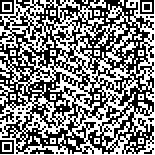章志超,周芳,乔娜,肖府庭,熊键,马艳.呼吸训练治疗脑卒中后吞咽功能障碍患者的疗效观察[J].中华物理医学与康复杂志,2017,39(10):742-746
扫码阅读全文

|
| 呼吸训练治疗脑卒中后吞咽功能障碍患者的疗效观察 |
| The effect of respiratory muscle training on the swallowing function of dysphasic stroke survivors |
| |
| DOI: |
| 中文关键词: 呼吸训练 脑卒中 吞咽障碍 临床疗效 |
| 英文关键词: Respiratory training Stroke Dysphagia Clinical efficacy Swallowing training |
| 基金项目:湖北省自然科学基金一般项目(2012FFB05801) |
|
| 摘要点击次数: 6651 |
| 全文下载次数: 7686 |
| 中文摘要: |
| 目的 观察呼吸功能训练对脑卒中患者吞咽功能障碍的改善作用。 方法 采用随机数字表法将42例脑卒中后吞咽障碍患者分为观察组及对照组,每组21例。对照组患者给予常规吞咽功能训练,观察组患者在此基础上辅以呼吸功能训练,每天训练1次。于治疗前、治疗4周后分别采用洼田饮水试验、吞咽造影检查(VFSS)评估患者吞咽功能,同时对2组患者治疗前、后用力肺活量(FVC)、1秒用力呼气量(FEV1)及呼气峰流速(PEF)进行检测。 结果 治疗4周后,观察组患者治疗显效率(85.71%)明显高于对照组(61.90%),组间差异具有统计学意义(P<0.05);2组患者治疗后VFSS评分均较治疗前明显提高(P<0.05),并且观察组患者VFSS评分[(8.92±0.95)分]亦显著高于对照组水平[(7.36±1.62)分],组间差异具有统计学意义(P<0.05);观察组治疗后FVC[(3.57±0.48)L]、FEV1[(2.83±0.49)L/s]及PEF[(5.36±1.04)L/s]均较治疗前及对照组明显改善,差异均具有统计学意义(P<0.05)。 结论 在常规吞咽功能训练基础上辅以呼吸训练,能进一步改善脑卒中患者吞咽功能及肺功能,其疗效优于单纯吞咽功能训练,该联合疗法值得临床推广、应用。 |
| 英文摘要: |
| Objective To observe the effect of respiratory training on post-stroke dysphagia. Methods Forty-two stroke survivors with dysphagia were randomly divided into a control group and an observation group, each of 21. Both groups were given routine swallowing training, while the observation group was additionally provided with respiratory training once a day for 4 weeks. Before and after the treatment, the Kubota drinking water test (KDWT) was administered and a videofluoroscopic swallowing study (VFSS) was performed to assess swallowing function. Forced vital capacity (FVC), forced expiratory volume in one second (FEV1) and peak expiratory flow (PEF) were also measured to assess the subjects′ pulmonary function. Results After the treatment, the average KDWT and VFSS scores were significantly better in the observation group than in the control group. The effectiveness rate of the observation group (85.71%) was significantly higher than that of the control group (61.90%). After the intervention, the average FVC [(3.57±0.48)L], FEV1 [(2.83±0.49) L/s] and PEF [(5.36±1.04) L/s] of the observation group were significantly better than those before the treatment and those of the control group after the treatment. Conclusion Swallowing training supported by respiratory training is superior to swallowing training alone for improving the swallowing (and pulmonary) function of post-stroke dysphagia patients. Such combined treatment is worthy of application in clinical practice. |
|
查看全文
查看/发表评论 下载PDF阅读器 |
| 关闭 |